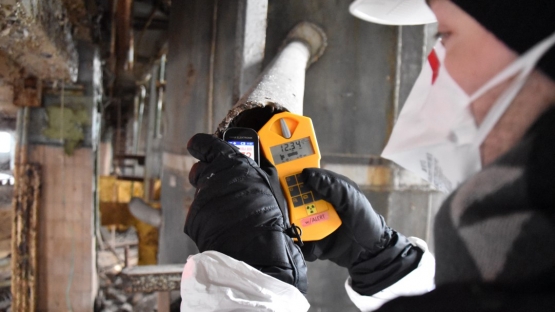An IAEA initiative to help Member States step up efforts in decommissioning old nuclear facilities and remediating contaminated sites is shifting into higher gear this year.
With many reactors reaching the end of their lifetime in coming decades, Member States are looking to the IAEA for advice in using new approaches and technologies. A group of experts from eight countries met in Vienna last week to begin the preparation of comprehensive, IAEA assistance programmes to accelerate clean-up projects across the globe.
The experts prepared initial materials and planning tools for the development of decommissioning and environmental remediation (D&ER) strategies, including for effective stakeholder involvement and human resource capacity building.
The meeting, part of the second phase of the CIDER (Constraints to Implementing Decommissioning and Environmental Remediation) project, laid the groundwork for an annual IAEA technical meeting in May. Member States facing D&ER liabilities will use that meeting to further develop the materials produced and to establish communities of practice. Once developed, these tools could be used by Member States directly or through the assistance provided by the IAEA technical cooperation programme, aligned with national, regional and/or international arrangements.
“In Brazil, we are embarking on a new project to remediate the site of a major uranium mining and milling facility that is no longer operational,” said Danielle Eisemberg from Indústrias Nucleares do Brasil S.A. of Brazil. “This is a big and complex endeavour and we have many issues to solve to enable its implementation. The CIDER II project will help us find ways to address them.”
Decommissioning is the last phase in the life cycle of nuclear facilities. It includes all activities needed to remove them from regulatory control and make the sites available for other uses. Environmental remediation, involving measures to reduce radiation exposure, is required when sites are contaminated as a result of operations that did not conform to adequate regulatory requirements or were affected by a nuclear accident or radiological emergency.
Many Member States have implemented successful D&ER projects. Several others have initiated them but have faced technical, social and political constraints, which have impeded their progress. The IAEA’s CIDER project was designed in 2013 to identify those constraints and suggest mechanisms that could improve levels of implementation of D&ER projects.
The reasons for slow progress in a number of D&ER projects worldwide often include financial constraints, but also a lack of national policy, inadequate regulatory frameworks and insufficient access to relevant technologies and qualified staff.
“Better overall strategies for D&ER, enhanced legal and regulatory arrangements as well as improved stakeholder engagement practices are needed,” said Oleg Voitsekovych from the Ukrainian Scientific and Research Institute for Hydrometeorology. “We hope that CIDER II may create the synergy to increase the effectiveness of technical assistance Ukraine receives from the international community in this area.”
Decommissioning using advanced technologies
Also last week, 110 participants from 25 countries gathered in Sarpsborg, Norway, to discuss current and emerging technologies that could improve decommissioning practices. Nuclear operators, regulators, scientists, consultants and contractors exchanged information and views on research and development and application of advanced technologies for nuclear decommissioning. The workshop was organized jointly by the IAEA and the OECD Nuclear Energy Agency.
“Demonstration of advanced computer-aided technologies provided participants with an overview of progress in support of decommissioning planning,” said Nils Morten Huseby, CEO of the Institute for Energy Technology (IFE). Jon Kvalem, Deputy Project Manager of OECD Halden Reactor Project added that sharing experience and demonstration of techniques is useful for many nuclear facilities worldwide, as many decommissioning challenges still have to be addressed.
Christophe Xerri, Director of the IAEA Division of Nuclear Fuel Cycle and Waste Technology, emphasized that CIDER II and the Sarpsborg workshop complement other IAEA activities and delivery mechanisms in the field of D&ER.
“IAEA-supported networks of professionals such as the International Decommissioning Network (IDN) and the Network of Environmental Management and Remediation (ENVIRONET) provide very useful opportunities for sharing knowledge, information and expertise, the basis of any successful project,” he said. The IAEA’s current and future activities in this field respond to many issues highlighted at the International Conference on Advancing the Global Implementation of Decommissioning and Environmental Remediation Programmes, held last year in Madrid, he added.







